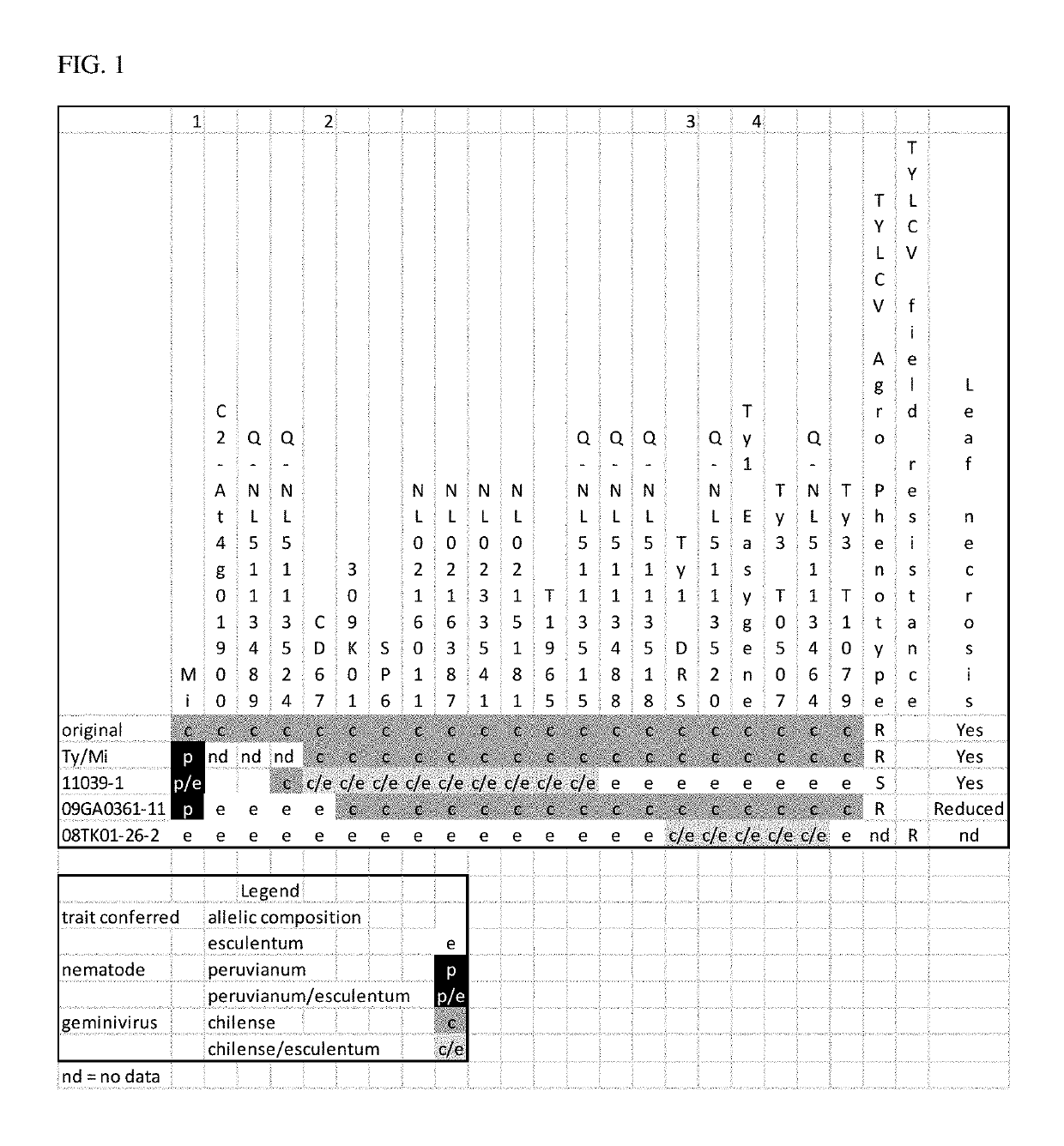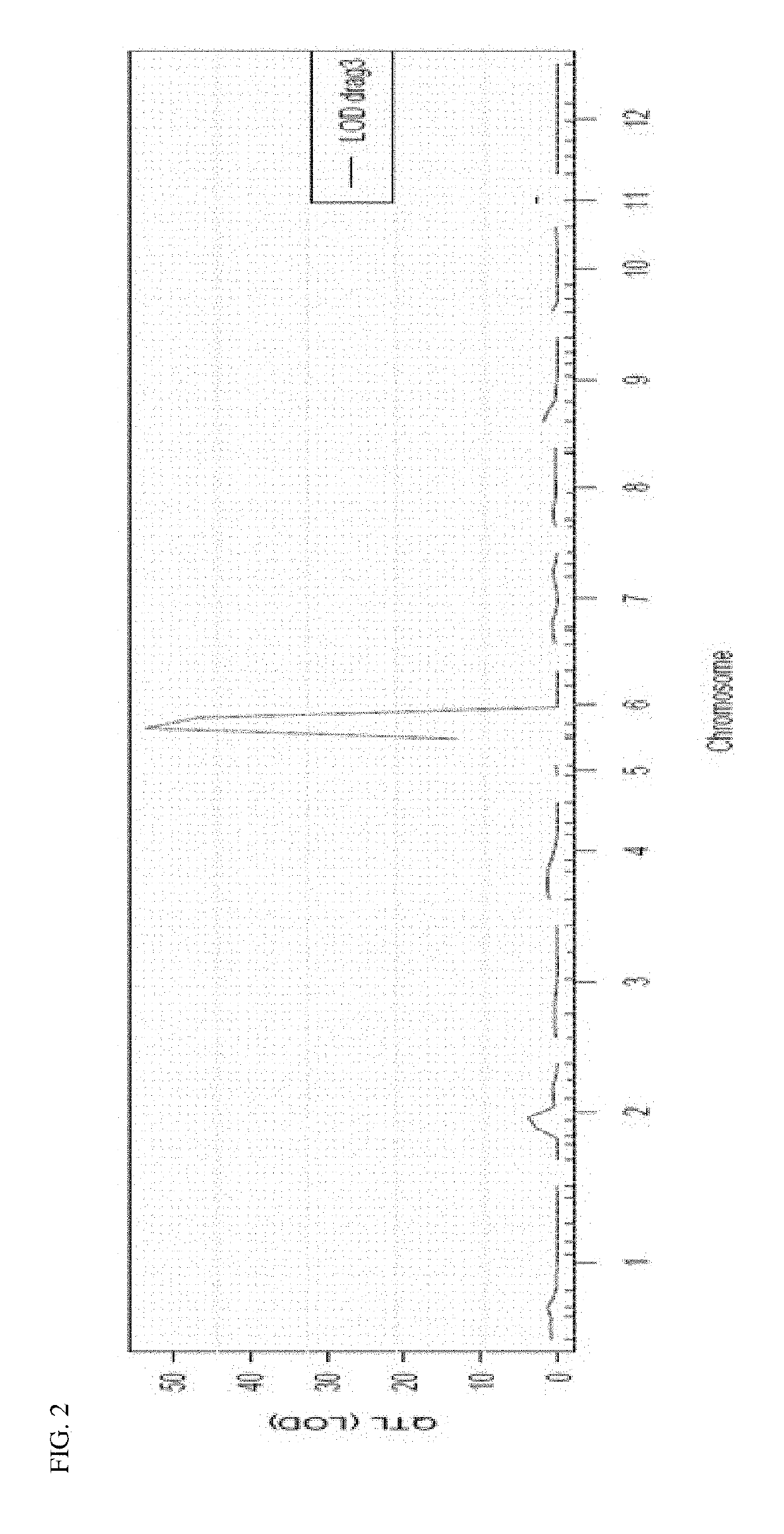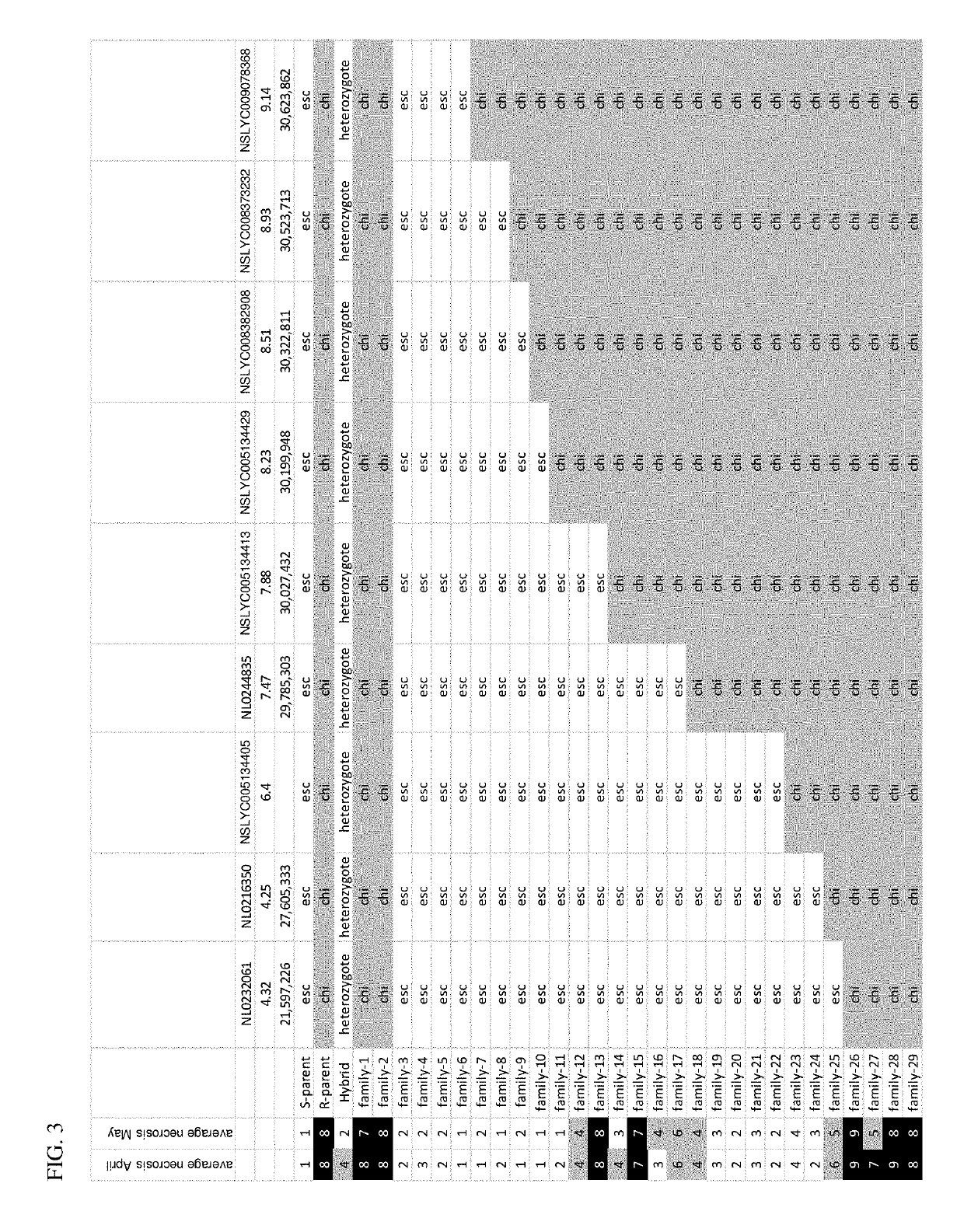Tomato plants with improved disease resistance
a technology of tomato plant, applied in the field of agriculture, can solve the problems of difficult identification or tracking of difficulty in identifying or tracking desirable traits, and inability to accurately identify or track desirable traits of plants, etc., to achieve the effect of improving resistance to tomato yellow leaf curl virus, and lack of or resistance to necrosis
- Summary
- Abstract
- Description
- Claims
- Application Information
AI Technical Summary
Problems solved by technology
Method used
Image
Examples
example 1
Identification of Recombinant Tomato Lines Comprising Ty-1
[0079]The Ty-1 TYLCV resistance locus from S. chilense LA1969 was introgressed into elite S. lycopersicon plants, resulting in several breeding lines with a high level of resistance to TYLCV. However, these lines exhibited undesirable agronomic traits associated with the Ty-1 introgression from S. chilense, including necrosis. The molecular markers shown in Table 1 were developed for identification of recombinants maintaining TYLCV resistance with reduced incidence of necrosis.
[0080]
TABLE 1Markers on chromosome 6 for identification of Ty-1 recombinants.MarkerPositionNL023358024,527,065NL02335703,293,791NL023404522,036,414NL023383334,148,452NL0233541 3,294,160NL034753728,852,768NL0347530 3,329,633NL034755223,690,907NL024483529,785,303NL023118731,166,320NL511352927,693,113NL51135242,404,524NL5113488 2,207,760NL5113492 634,983NL51135002,842,081NL51134963,540,443NL511352030,622,375NL51135181,162,062NL51134891,238,761NL511351521,3...
example 2
Mapping Populations
[0082]Parent varieties Petit (FIR-191-PETIT) and Screen (FIR-191-SCREEN) were crossed to create an F2 population for further analysis of necrosis and other traits in plants comprising Ty-1 introgressions. FIR-191-PETIT is the parent comprising the chilense introgression. Ninety-two hundred seeds from the F2 population were sown and analyzed with markers NL0232070 and NL0231193 resulting in 209 validated recombinants. Of these recombinants, 42 were grown in the greenhouse to produce selfed (F3) seed, and F3 plants were phenotyped for necrosis. Twenty-five of the F3 lines fixed for a recombination event between NL0232070 and NL0231193 were grown in greenhouse conditions for analysis of the Ty-1 introgression.
example 3
Evaluation of TYLCV Resistance and Necrosis in Mapping Populations
[0083]Plants were evaluated for TYLCV resistance using the following whitefly inoculation protocol. Plants were exposed to whiteflies (Bemisia tabaci (Q biotype)) carrying TYLCV for 48 hours at the first true leaf stage (approximately 3 weeks after sowing). Plants were scored for TYLCV resistance according to the scale shown in Table 2 and evaluated for necrosis using the scale shown in Table 3. Scoring was performed 15 and 30 days post inoculation when at least 90% of the susceptible control plants were infected with TYLCV (score 9).
[0084]
TABLE 2TYLCV Scoring ScaleRating 1 = no symptoms.scale 3 = some yellow spots or stripes at the edges of top leaves.definition5 = obvious yellowing of top leaves, no curling.7 = obvious yellowing and curling of top leaves. Somegrowth reduction of plant might occur.9 = heavy growth reduction of plant, heavy curling andyellowing of top leaves.Norm to At least 90% of the susceptible con...
PUM
| Property | Measurement | Unit |
|---|---|---|
| temperature | aaaaa | aaaaa |
| temperature | aaaaa | aaaaa |
| resistance | aaaaa | aaaaa |
Abstract
Description
Claims
Application Information
 Login to View More
Login to View More - R&D
- Intellectual Property
- Life Sciences
- Materials
- Tech Scout
- Unparalleled Data Quality
- Higher Quality Content
- 60% Fewer Hallucinations
Browse by: Latest US Patents, China's latest patents, Technical Efficacy Thesaurus, Application Domain, Technology Topic, Popular Technical Reports.
© 2025 PatSnap. All rights reserved.Legal|Privacy policy|Modern Slavery Act Transparency Statement|Sitemap|About US| Contact US: help@patsnap.com



